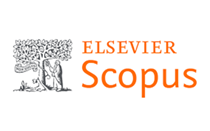ІННОВАЦІЙНА ПОЛІТИКА ЧЕРЕЗ ПРИЗМУ ЕКОНОМІЧНОЇ ТЕОРІЇ
Ключові слова:
Інновації, інноваційна політика, інструменти інноваційної політики, неокласична економічна теорія, інституціональна економічна теорія, неошумпетеріанська економічна теорія, девелопменталістська традиція.Анотація
Виконано аналіз положень неокласичної, інституціональної, неошумпетеріанської економічних теорій та девелопменталістської традиції з точки зору підстав та обмежень для державного втручання у сферу інновацій. Удосконалено та систематизовано теоретичні засади інноваційної політики з позицій цих економічних шкіл як підґрунтя для науково обґрунтованого вибору політичних інструментів, спрямованих на вирішення інноваційних проблем та усунення причин їх виникнення. Обґрунтовано, що для вибору політичних інструментів важливо спиратися на судження та рекомендації різних економічних теорій і виходити з того, яка країна розглядається – розвинена чи відстала, промислово потужна чи незміцніла з усім спектром культурних, економічних і політичних факторів, їй притаманних. Покладаючись на теоретичну аргументацію, зроблено пропозиції для України щодо необхідності переосмислення концепції інструментів підтримки та стимулювання інновацій.
Класифікація за JEL: О30, О31, O38.
Посилання
Бажал, Ю. М. (2021). Українська інноваційна політика: проблема смартспеціалізації. Наукові записки НаУКМА. Економічні науки, 6(1), 8–13 https://doi.org/10.18523/2519-4739.2021.6.1.8-13
Вишневський, В. П., & Збаразська, Л. А. (ред.). (2013). Промислова політика і управління розвитком промисловості в умовах системних дисбалансів: концептуальні основи [російською мовою]. Інститут економіки промисловості. https://iie.org.ua/wp-content/uploads/monografiyi/2013/2013_mono_Vishnevskiy_Zbarazska.pdf
Гаврилишин, Б. (2009). До ефективних суспільств: Дороговкази в майбутнє: доп. Римському Клубові; упоряд. В. Рубцов. Вид. 3-тє, допов. Унів. видво ПУЛЬСАРИ.
Омельяненко, В., Омельяненко, О., & Вернидуб, М. (2022). Наукові засади аналітичного підходу до формування та оцінювання ефективності інноваційної політики в контексті сталого розвитку. Економіка та суспільство, 42. https://doi.org/10.32782/2524-0072/2022-42-88
Попович, О. С. (2019). Науково-технологічна та інноваційна політика: основні механізми формування та реалізації. Вид. 2-ге випр. і доповн. Київ : Фенікс.
Портал НАН України. (2017). Рівні готовності технологій. https://www.nas.gov.ua/RDOutput/UA/book2017/Pages/trlnav.aspx
Bugge, M., Andersen, A., & Steen, M. (2022). The role of regional innovation systems in mission-oriented innovation policy: exploring the problem-solution space in electrification of maritime transport. European Planning Studies, 30(11), 2312–2333. https://doi.org/10.1080/09654313.2021.1988907
Casula, M. (2022). Implementing the transformative innovation policy in the European Union: How does transformative change occur in member states?. European Planning Studies, 30(11), 2178–2204. https://doi.org/10.1080/09654313.2021.2025345
Borrás, S., & Edquist, C. (2013). The choice of innovation policy instruments. Technological Forecasting and Social Change, 80(8), 1513–1522.https://doi.org/10.1016/J.TECHFORE.2013.03.002
Buchanan, J. M. (1975). The limits of liberty: Between anarchy and leviathan. University of Chicago Press. https://www.econlib.org/library/Buchanan/buchCv7.html?chapter_num=1#book-reader
Edquist, C. (2019). Towards a holistic innovation policy: Can the Swedish National Innovation Council (NIC) be a role model?. Research Policy,48(4), 869–879. https://doi.org/10.1016/j.respol.2018.10.008
Edquist, C. (2005). Systems of innovation: technologies, institutions and organizations. Routledge.
Fagerberg, J. (2015). Innovation policy, national innovation systems and economic performance: in search of a useful theoretical framework. 2014
EU-SPRI conference, Science and innovation policy: Dynamics, Challenges, Responsibility and Practice. https://www.researchgate.net/publication/270452701_Innovation_policy_In_search_of_a_useful_theoretical_framework.
Freeman, C. (1987). Technology policy and economic performance: Lessons from Japan. Frances Pinter.
Hart, D. (2004, Aug 17). On the origins of Google. National Science Foundation. https://beta.nsf.gov/news/origins-google
Hodgson, G. M. (2003). The mystery of the routine. The Darwinian destiny of an evolutionary theory of economic change. Revue économique, 54(2), 355–384. https://doi.org/10.2307/3503007
Isaksen, А, Trippl, M., & Mayer, H. (2022). Regional innovation systems in an era of grand societal challenges: reorientation versus transformation. European Planning Studies, 30(11), 2125–2138. https://doi.org/10.1080/09654313.2022.2084226
Jacobs, L. (2013, Oct 28). GPS, lithium batteries, the internet, cellular technology, airbags: A Q&A about how governments often fuel innovation. TED Blog. https://blog.ted.com/qa-mariana-mazzucato-governments-often-fuel-innovation
Jaffe, A. B. (1998). The importance of «spillovers» in the policy mission of the advanced technology program. Journal of Technology Transfer, 23, 11–19. https://doi.org/10.1007/BF02509888
Lalljee, J. (2021, Dec 15). Elon Musk is speaking out against government subsidies. Here’s a list of the billions of dollars his businesses have received. Business Insider. https://www.businessinsider.com/elon-musklist-government-subsidies-tesla-billions-spacex-solarcity-2021-12
Lundvall, B.-A. (ed.). (2010). National systems of innovation: Towards a theory of innovation and interactive learning. Anthem Press. https://doi.org/10.7135/UPO9781843318903
Ma, X., Gryshova, I., Khaustova, V., Reshetnyak, O., Shcherbata, M., Bobrovnyk, D., & Khaustov, M. (2022). Assessment of the impact of scientific and technical activities on the economic growth of world countries. Sustainability, 14(21), 14350. https://doi.org/10.3390/su142114350
Mazzucato, М. (2018а). Mission-oriented innovation policies: Challenges and opportunities. Industrial and Corporate Change, 27(5), 803–815. https://doi.org/10.1093/icc/dty034
Mazzucato, M. (2018b). Mission-oriented research & innovation in the European Union. A problem-solving approach to fuel innovation-led growth. Publications Office of the European Union. https://doi.org/10.2777/360325
Monteil, A. (2020, Dec 9). 50 inventions you might not know were funded by the US government. Stacker. https://stacker.com/stories/5483/50-inventionsyou-might-not-know-were-funded-us-government
Nelson, R., & Winter, S. (1982). An evolutionary theory of economic change. The Belknap Press of Harvard University Press.
Nelson, R. R. (ed.). (1993). National innovation systems: A comparative analysis. Oxford University Press.
North, D. C. (1990). Institutions, institutional change and economic performance. Cambridge University Press. OECD. (1997). National Innovation Systems. https://www.oecd.org/science/inno/2101733.pdf
Schwartz, G., & Clements, B. (1999). Government subsidies. Journal of Economic Surveys, 13(2), 119–147. https://doi.org/10.1111/1467-6419.00079
Stoelhorst, J. W. (2005). The naturalist view of universal Darwinism: An application to the evolutionary theory of the firm. In J. Finch & M. Orillard (Eds.), Complexity and the Economy: Implications for Economic Policy (pp. 127–147). Edward Elgar Publishing. https://doi.org/10.4337/9781845428044
Yehorov, I. Yu. (2017). Innovation support measures in Ukraine: Some legislative and organizational aspects. Science, Technologies, Innovations, 4, 62–70. http://nti.ukrintei.ua/?page_id=1111
Отримано: 14 листопада 2022.
Рецензовано: 26 листопада 2022.
Рекомендовано до друку: 28 листопада 2022.
##submission.downloads##
Опубліковано
Як цитувати
Номер
Розділ
Ліцензія
Автори, які публікуються у цьому журналі, погоджуються з наступними умовами:
- Автори залишають за собою право на авторство своєї роботи та передають журналу право першої публікації цієї роботи на умовах ліцензії Creative Commons Attribution License, котра дозволяє іншим особам вільно розповсюджувати опубліковану роботу з обов'язковим посиланням на авторів оригінальної роботи та першу публікацію роботи у цьому журналі.
- Автори мають право укладати самостійні додаткові угоди щодо неексклюзивного розповсюдження роботи у тому вигляді, в якому вона була опублікована цим журналом (наприклад, розміщувати роботу в електронному сховищі установи або публікувати у складі монографії), за умови збереження посилання на першу публікацію роботи у цьому журналі.
- Політика журналу дозволяє і заохочує розміщення авторами в мережі Інтернет (наприклад, у сховищах установ або на особистих веб-сайтах) рукопису роботи, як до подання цього рукопису до редакції, так і під час його редакційного опрацювання, оскільки це сприяє виникненню продуктивної наукової дискусії та позитивно позначається на оперативності та динаміці цитування опублікованої роботи (див. The Effect of Open Access).








